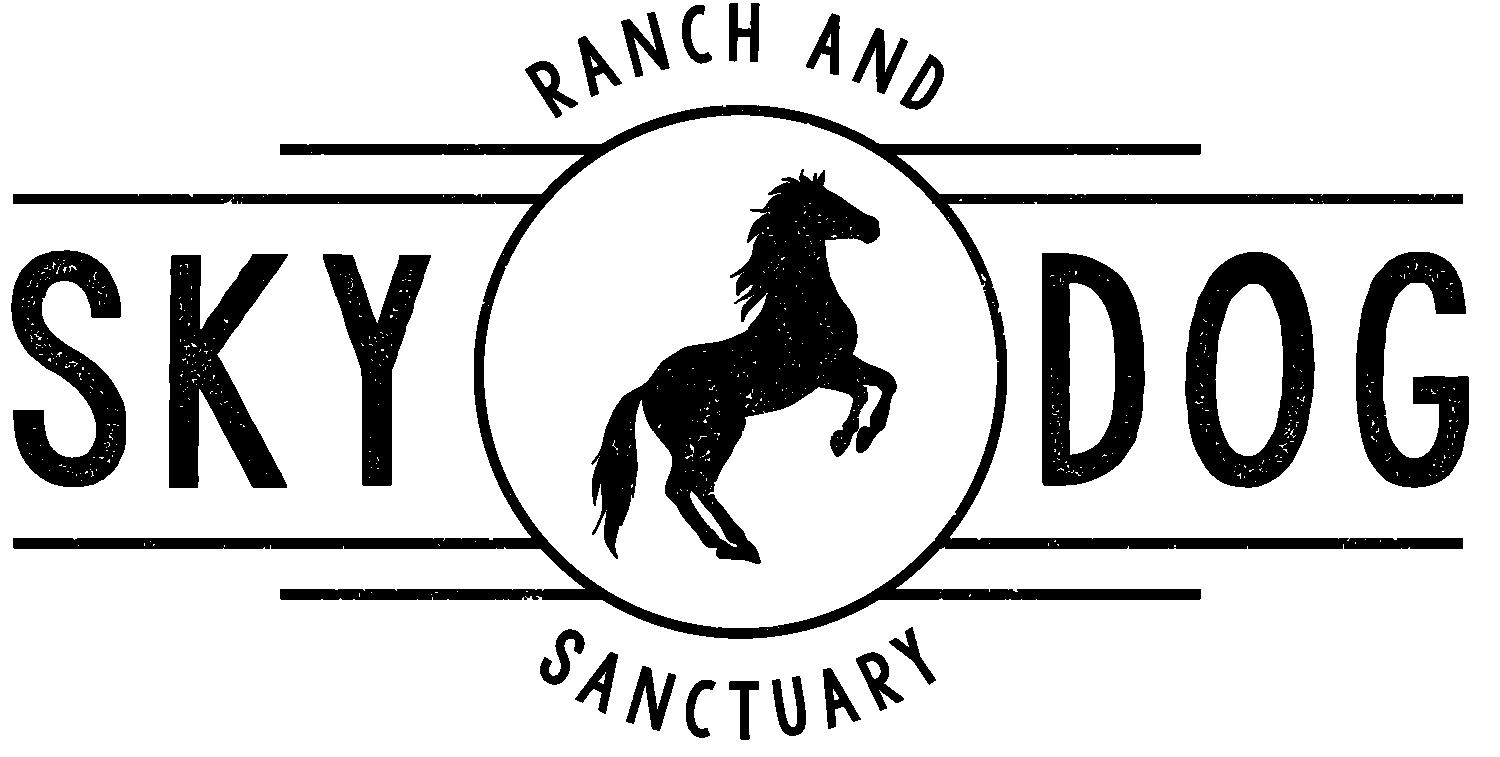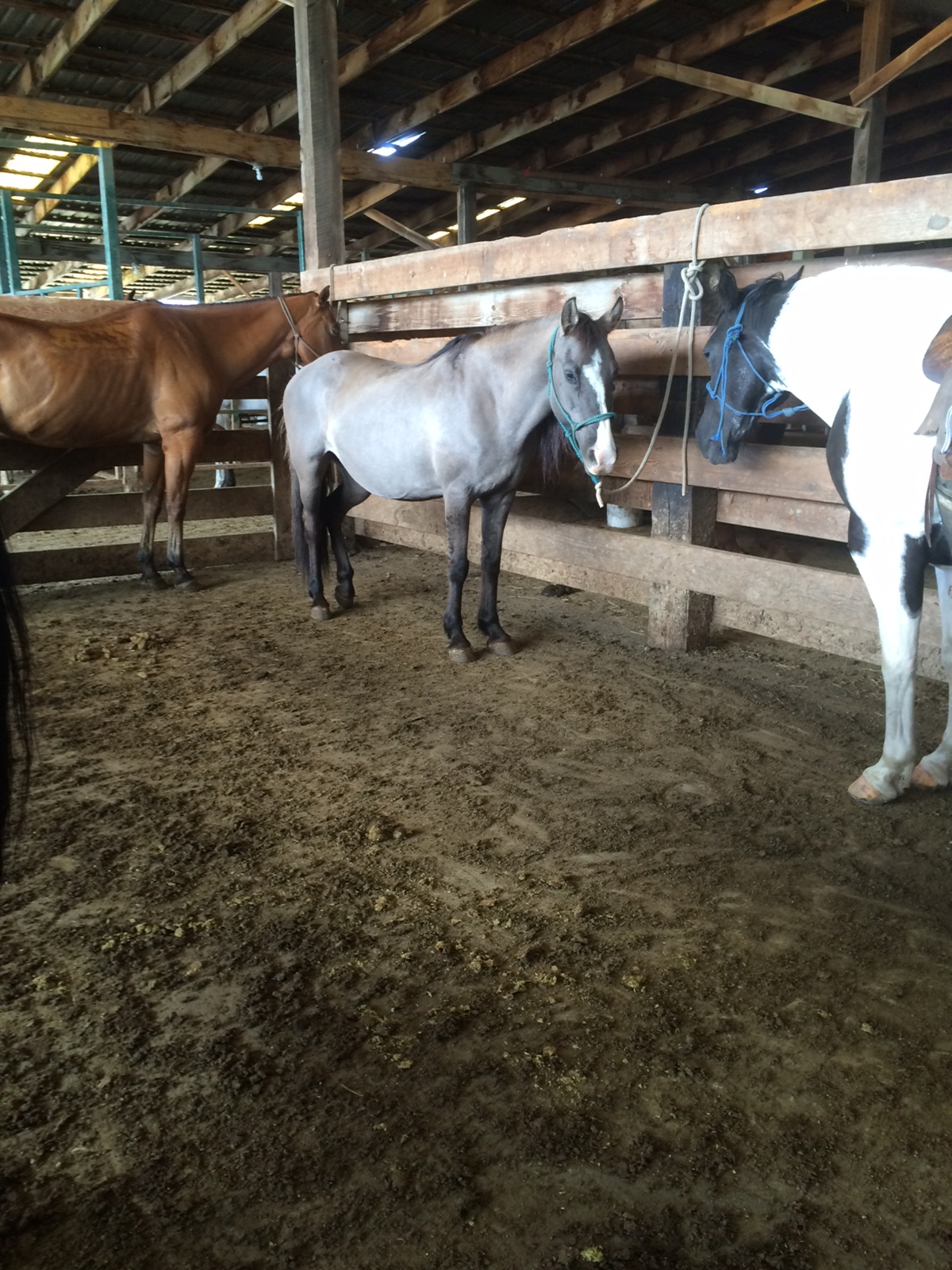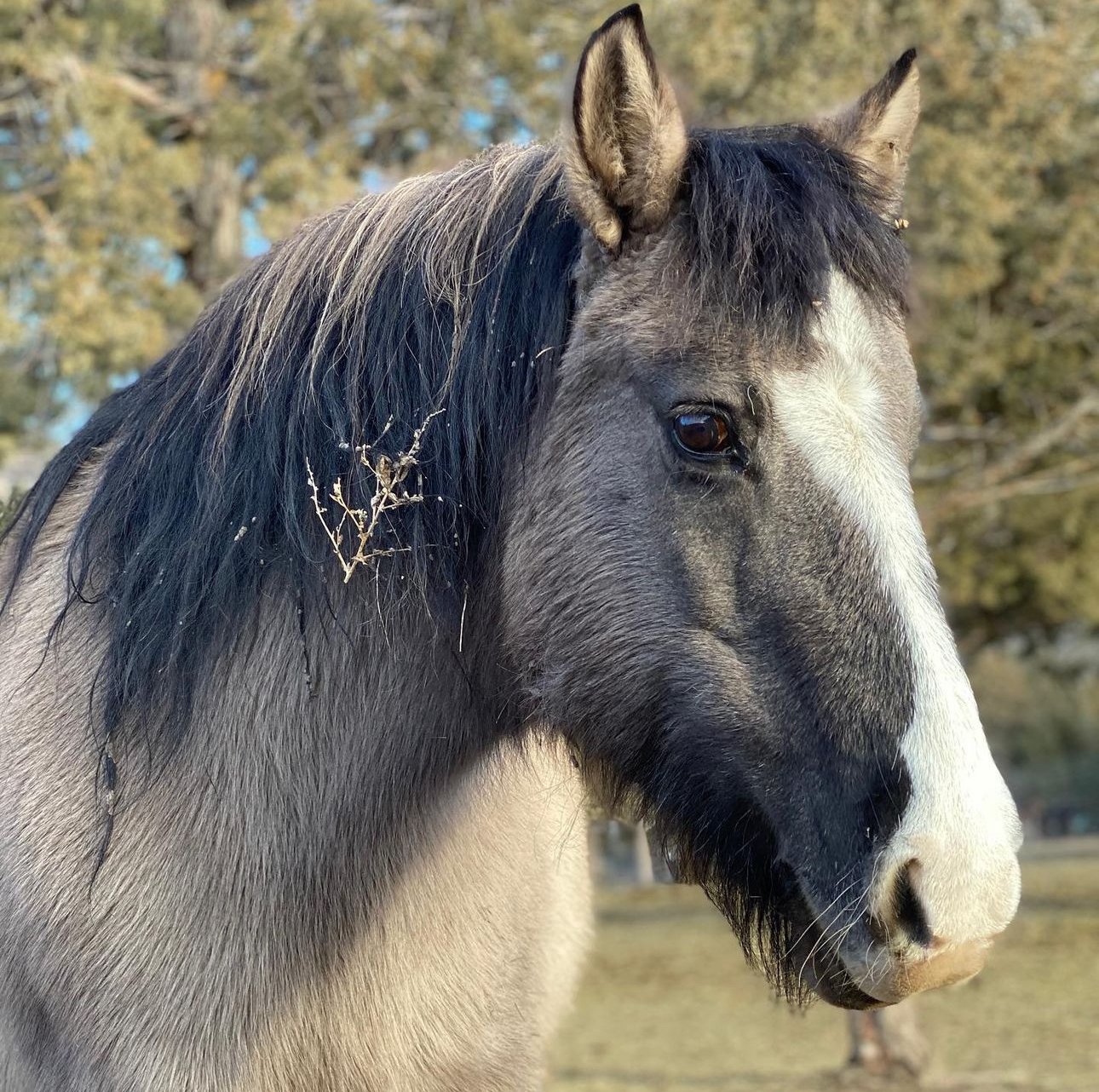JONES
Jones is a small, plump, grulla mustang pony and one of the first horses we rescued. We found her in the Eugene Livestock Auction, which sends many beautiful, healthy horses to a kill buyer in Washington.
She stands 13 hands (if even that tall) and looks like a teddy bear with her fluffy coat. Socially awkward, she mostly keeps to herself, though she has made some touching connections. Doesn’t care for humans, though she tolerates us. We absolutely adore her independent spirit and unique personality. She’s happy and that’s all that matters.
Jones is happiest free, but we have to bring her in off the green grass in spring as she stays a little chubby, even on tumbleweed. She gets low-sugar hay and low-sugar feed (and sugar-free cookies) until the green grass has burned off and turned brown.
Jones comes from the Yakama Reservation. They are a member of the National Tribal Horse Coalition (NTHC), which is comprised of the Confederated Tribes and Bands of the Yakama Nation (Washington), the Confederated Tribes of Warm Springs (Oregon), the Confederated Tribes of the Umatilla Indian Reservation (Oregon), the Confederated Tribes of the Colville Reservation (Washington), and the Shoshone Bannock Tribes (Idaho). Along with Navajo of the Southwest, these tribes are opposed to the SAFE Act and support horse slaughter.
Wild equines on Tribal Lands are not afforded the protection of the 1971 Wild Horse and Burro Act. The treatment and culling of wild horses on these reservations is brutal. They used to rip the foals from their mothers before they shipped and kill them, but now many rescue groups rally to save the foals and find them homes. According to the Horse Welfare Collective, the Wind River Reservation sent 6,600 wild horses to slaughter in Mexico and Canada in 2023.
The modern day horse owes a lot to native horses and their descendants are still with us. "Horses in America today are descendants of Indian horses. For example, the American quarter horse descends from an 18th century cross of Chickasaw ponies with their superior speed and agility and English Thoroughbreds. The Appaloosa is descended from animals bred by the Nez Perce, who once owned the largest herd in North America." (Smithsonian National Museum of the American Indian).
The fossil record shows horses are indeed native to North America and cutting-edge DNA studies show they were not all wiped out at the end of the last Ice Age. It has also been noted by many knowledgeable visitors that Jones is similar in appearance to the original horses, so she is truly a special mare.
Mustangs & Burros Need your help
In addition to supporting our work by donating, becoming a patron on Patreon, or sponsoring a Skydog, there are several important pieces of legislation to protect American equines currently moving through Congress. It only takes a few minutes to contact your Rep and Senators and urge them to support these bills:
Save America’s Forgotten Equines (SAFE) Act of 2023 (H.R. 3475 in the House / S.2307 in the Senate). This bill will shut down the slaughter pipeline that sends some 20,000 American horses and donkeys to savagely monstrous deaths in foreign slaughterhouses every year.
The Wild Horse & Burro Protection Act of 2023 (H. R. 3656) This bill will prohibit the use of helicopters or fixed-wing aircraft in the management of wild mustangs and burros on public lands, and require a report on humane alternatives to current management practices.
Ejiao Act of 2023 (H.R. 6021). To ban the sale or transportation of ejiao, a gelatin made from boiling donkey skins, or products containing ejiao in interstate or foreign commerce, which brutally kills millions of donkeys primarily for beauty products and Chinese medicine.
You can Contact Members of Congress by calling the Capitol Switchboard (202) 224-3121, submitting contact forms on their individual websites, or sending one email to all three simultaneously at www.democracy.io
See our How to Help menu for other actions to ban zebra hunting at US canned hunt ranches, stop production of Premarin & other PMU drugs, and defund the Adoption Incentive Program.



